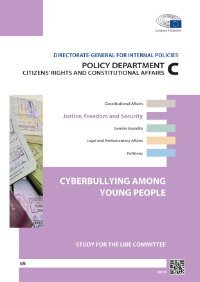By National Academies of Sciences, Engineering, and Medicine
Bullying has long been tolerated as a rite of passage among children and adolescents. There is an implication that individuals who are bullied must have "asked for" this type of treatment, or deserved it. Sometimes, even the child who is bullied begins to internalize this idea. For many years, there has been a general acceptance and collective shrug when it comes to a child or adolescent with greater social capital or power pushing around a child perceived as subordinate. But bullying is not developmentally appropriate; it should not be considered a normal part of the typical social grouping that occurs throughout a child's life.
Although bullying behavior endures through generations, the milieu is changing. Historically, bulling has occurred at school, the physical setting in which most of childhood is centered and the primary source for peer group formation. In recent years, however, the physical setting is not the only place bullying is occurring. Technology allows for an entirely new type of digital electronic aggression, cyberbullying, which takes place through chat rooms, instant messaging, social media, and other forms of digital electronic communication.
Composition of peer groups, shifting demographics, changing societal norms, and modern technology are contextual factors that must be considered to understand and effectively react to bullying in the United States. Youth are embedded in multiple contexts and each of these contexts interacts with individual characteristics of youth in ways that either exacerbate or attenuate the association between these individual characteristics and bullying perpetration or victimization. Recognizing that bullying behavior is a major public health problem that demands the concerted and coordinated time and attention of parents, educators and school administrators, health care providers, policy makers, families, and others concerned with the care of children, this report evaluates the state of the science on biological and psychosocial consequences of peer victimization and the risk and protective factors that either increase or decrease peer victimization behavior and consequences.
Washington, DC: The National Academies Press. 2016. 361p.





